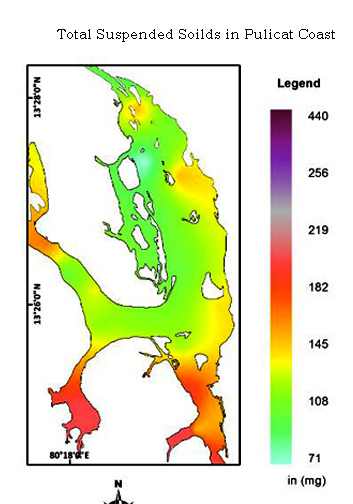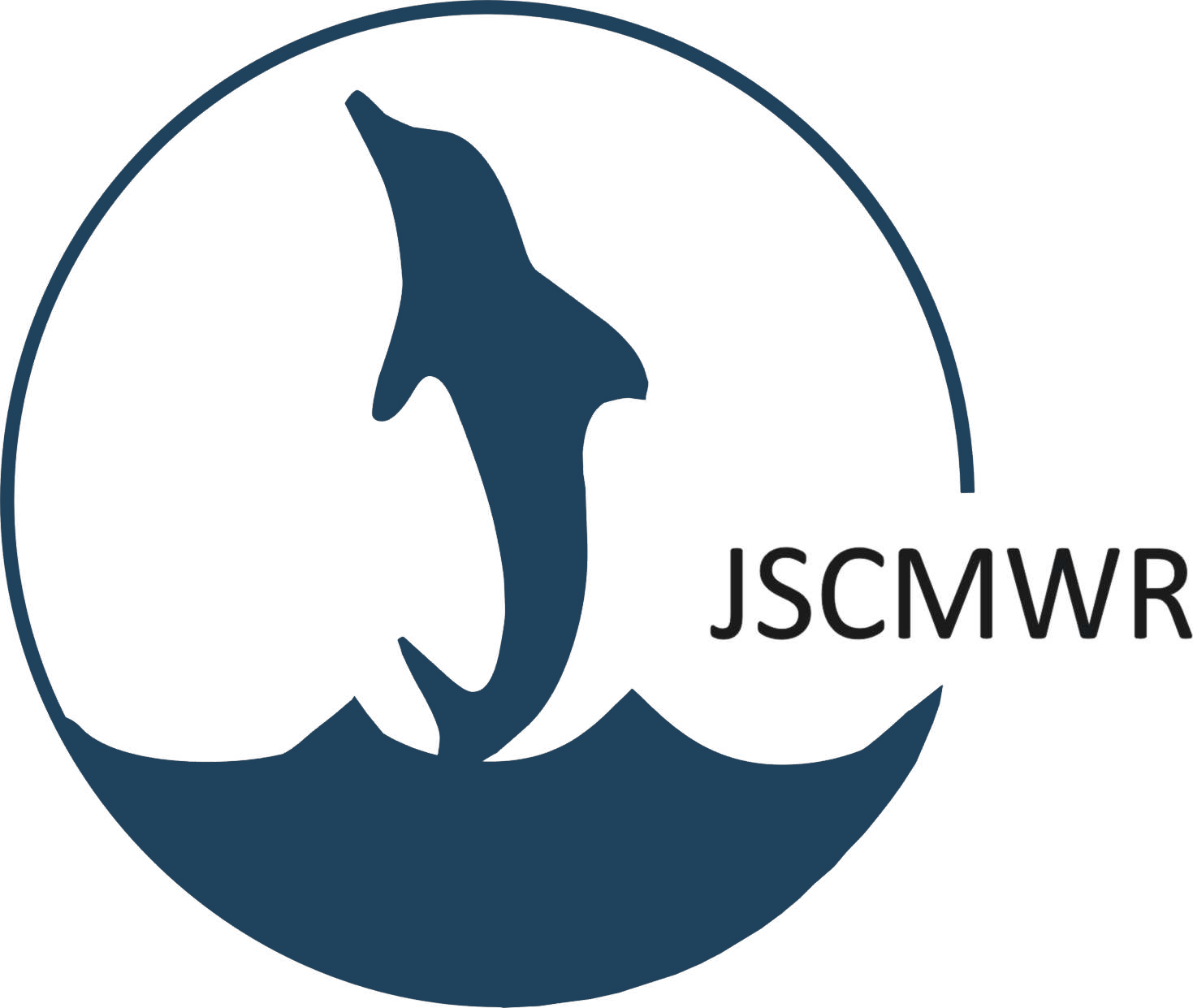GIS based Sediment Transport Modelling in Pulicat
 Total suspended solids were measured in the flushing channel of Pulicat between lake and sea. In November 2013, suspended solids were noticed higher in st.7 (241mg/l) lower in St.13 (153mg/l). In December 2013, suspended solids were recorded to be higher in St.1 (436 mg/l) and least level in St. 8 (154 mg/l). In the month of January 2014, suspended particles were higher in St.5 (195mg/l) and lower in St. 12 (72 mg/l). High amount of suspended particles in all stations were observed in November 2013 (4206 mg/l), followed by December 2013 (4060 mg/l) and January 2014 (2197 mg/l). However, in December, 2013 at St.1 to be identified as higher suspended load site (436mg/l). Interpolation contour models showed that suspended load in the month of November
Total suspended solids were measured in the flushing channel of Pulicat between lake and sea. In November 2013, suspended solids were noticed higher in st.7 (241mg/l) lower in St.13 (153mg/l). In December 2013, suspended solids were recorded to be higher in St.1 (436 mg/l) and least level in St. 8 (154 mg/l). In the month of January 2014, suspended particles were higher in St.5 (195mg/l) and lower in St. 12 (72 mg/l). High amount of suspended particles in all stations were observed in November 2013 (4206 mg/l), followed by December 2013 (4060 mg/l) and January 2014 (2197 mg/l). However, in December, 2013 at St.1 to be identified as higher suspended load site (436mg/l). Interpolation contour models showed that suspended load in the month of November  and December (monsoon season) has higher both spatially and quantitatively. Nevertheless, suspended particles in November were higher from mouth to inner lake of the flushing channel and in December, particles were less in distribution but greater in quantitatively in chosen stations. As per the water movement which cause erosion and accretion and particle settlement in the lake, bathymetry being determined. Bathymetry mapping both DEM and interpolation contour models showed that western side of the St 7 found to be higher depth caused by water current induced erosion. Most of the parts in flushing channel of Pulicat noticed as shallow regions. Some pocket regions in Northern and Southern part of flusing channel seems to be high depth which investigated clearly in the bathymery maps. Bethymetry in January showed the reducion of depth might be less water current caused accretion. During November 2013, 30 tonnes of sediments carried by low tide water flushing towards sea and 27 tonnes carried towards lake by high water is the highest transaction (Table 2). Three tonnes of sediment carried into sea by net transport migration. It was reduced in January as 1.5 tonnes. the suspended particle transport was higher in monsoon and reduced in Post monsoon and highly depends on the fresh water run off and river water which carries particle by Kalangi river.
and December (monsoon season) has higher both spatially and quantitatively. Nevertheless, suspended particles in November were higher from mouth to inner lake of the flushing channel and in December, particles were less in distribution but greater in quantitatively in chosen stations. As per the water movement which cause erosion and accretion and particle settlement in the lake, bathymetry being determined. Bathymetry mapping both DEM and interpolation contour models showed that western side of the St 7 found to be higher depth caused by water current induced erosion. Most of the parts in flushing channel of Pulicat noticed as shallow regions. Some pocket regions in Northern and Southern part of flusing channel seems to be high depth which investigated clearly in the bathymery maps. Bethymetry in January showed the reducion of depth might be less water current caused accretion. During November 2013, 30 tonnes of sediments carried by low tide water flushing towards sea and 27 tonnes carried towards lake by high water is the highest transaction (Table 2). Three tonnes of sediment carried into sea by net transport migration. It was reduced in January as 1.5 tonnes. the suspended particle transport was higher in monsoon and reduced in Post monsoon and highly depends on the fresh water run off and river water which carries particle by Kalangi river.
